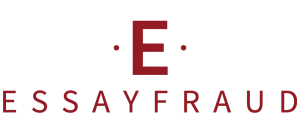Chicago style format. Chicago style manual in 5 pages
Chicago is one of the most used styles for academic writing. It was developed by the University of Chicago Press and first published in 1906. This style includes rules for how to format, cite, and reference sources used in a work. This style is also known as Turabian because A Manual for Writers of Research Papers, Theses, and Dissertations (a book written by Kate L. Turabian) uses Chicago style rules. The Chicago style format consists of four main parts: page format, text layout format, citation format, and citation format. Page format includes rules about font size, line spacing, margins, and more. Text layout formats include rules about using italics and bold and page numbering. The reference format contains instructions on how to write a reference list at the end of your document. And the citation format contains instructions on how to cite the sources used in your text.

What is chicago style
How are Chicago and Turabian styles different?
Title Page: The title page includes the document title, author name, and other information that may be required. Main Body: The main body is the core part of the paper. It contains the main text, paragraphs and footnotes. Bibliography: A bibliography is a list of sources used to create a document. This includes books, journal articles, websites and other sources.Need help WRITING RESUMES?
Just submit your requirements and choose a resume writer. That’s all we need to write a winning resume for you.
General rule
- Font: Clear and easy to read, the preferred font is Times New Roman or Courier
- Font size: generally not less than 10pt, but preferably 12pt
- Spaces: doubled everywhere except in block citations, table titles, notes, figure figures, and bibliography or reference entries
- Space between paragraphs: none
- Margins: Not less than 1″
- Chicago Style Page Number: placed in the upper right corner of each page excluding the title page, so the first page of the main body must be numbered at 1
- Footnotes: must be assigned to the quoted or paraphrased passage if you are using the Note-Bibliography method.
Chicago Style Cover Page
- The paper or article title should be placed a third down the top of the page and centered.
- The document title must be followed by the author’s name, class information, and date (all placing a few lines below the title).
- All double spacing.
- If you need to include subtitles as well, end the title line with a colon and type the subtitles on the following lines.
Chicago style in text quote

- Source titles placed in papers, notes, and bibliographies must follow the main style capitalization.
- Titles placed in papers, notes, and bibliographies may be italicized or taken in quotation marks based on the type of work they refer to:
- Titles of larger works, including books and periodicals – should be italicized.
- Titles of shorter works, including chapters and articles – Must be put in quotes.
- Titles of most poems – Must be enclosed in double quotes.
- Longer title of the poem – should be italicized.
- Game title – should be italicized.
- In other cases – Be sure to take a minimalist approach to capitalization. Don’t overuse italics or quotation marks for no reason. Also, use lowercase when there’s no need for uppercase.
- When quoting something, make sure to block quotes where needed. For prose, it is recommended to block quotes when they are longer than five lines. Read more details about block quotes further in this article.
Chicago style headed
1. Use uppercase and lowercase for titles and subtitles. Titles must be written in capitals and bold, while subtitles must be written in lowercase. 2. Use appropriate punctuation to separate headings and subtitles. Usually, a colon (:) is used to separate the title and subtitle. 3. Use clear and concise words to effectively state the contents of the document. Don’t use long sentences or jargon that your readers won’t be familiar with. 4. Create a title that describes the contents of the document accurately but briefly. This will help readers find the information they are looking for more quickly and easily.- Place all subheadings on a new line.
- Follow the style of headline capitalization.
- Maintain consistency and parallel structure across all headings and subheadings.
- Authors may use different font sizes to differentiate subheadings.
- It is recommended not to end subheadings with a period.
- There must be a maximum of three hierarchical levels.
- All levels must be consistent and clear.
- To vary the degree of hierarchy, authors may use a different font, bold or italic, or different placement on the page (either left flush or centered preferably).
Quote In Text Chicago Style
For the Author-Date system, you must include the year and author’s name at the end of each citation. This is usually written in parentheses. For example: (Smith 2020). If you are using the same source repeatedly, all you need to do is include the author’s name and year in each citation. 1. The author’s name must be written in capital letters, followed by a comma. 2. The year is written in a four-digit number, followed by a comma. 3. The title must be written in bold or italic, followed by an end point.- The author’s last name, publication date, and page number should all be included in parentheses.
- No punctuation is allowed between the author’s last name and the date of publication.
- No abbreviations allowed.
- Separate the publication date and page number with a comma.
- When there is no author, you should use the short title of the source in your in-text citation.
- If citing multiple sources on the same page, cite the full source after the last reference.
Chicago quote block.
Quotations must be marked with quotation marks, and each new line within the quotation must begin with a tab. After the citation, you must include a reference indicating the original source of the citation. This reference is usually in the form of the author’s name and the title of the book or article.
1. Use double quotation marks (“”) to mark quotations from outside sources. 2. Use square brackets ([ ]) to mark a quote that comes from an outside source and is modified by the author. 3. Use single quotation marks (‘) to mark words or phrases that are used commonly and do not originate from an outside source. 4. Use double quotation marks (“”) to mark words or phrases that are used commonly and come from outside sources.
- Always start block quotes on a new line.
- Do not put such passages in quotation marks.
- Indent quote blocks with the word processor’s indentation tool.
Numbers and acronyms.
An acronym is an abbreviation made up of the first letters of several words. Acronyms are used to simplify and make it easier to use long and complex words or phrases. When you first refer to acronyms, you should define what they stand for. For example, the acronym LGBT stands for Lesbian, Gay, Bisexual, and Transgender. It reflects groups fighting for social and political rights for people with non-normative sexual and gender identities.

Chicago Style Bibliography: Footnotes and Endnotes
Chicago style footnote
1. Provide information about the original source of the quote, passage, or paraphrased information. 2. Provide links to original sources to make it easier for readers to find them. 3. Provide further explanation on the topic related to the paraphrased quote, passage, or information. 4. Provide references to other sources relevant to the topics discussed on the page.- Provide short quotations to cite and paralyze materials.
- Provide additional explanations or notes on some terms, phrases, etc.
- Provide background information if necessary.
- Provide links to outside sources.
- Mention copyright permission, etc.
- Place footnotes at the bottom of the page.
- Include footnotes on the same page where the information you stated was provided.
- Number each note with the same number after the quote or section you quoted.
- When first making notes for a particular source, include all of the following information: Author’s full name, source title, and publication details.
- When you cite the same source again, the note only requires the author’s surname, the shortened form of the title (if the title is longer than 4 words), and the page number.
- If you are citing the same source and page more than twice, use the word “ibid.” which means “from the same place.” If they are from different pages, use the word “ibid.”, but also follow it with the page number.

Chicago Endnotes style.
Endnotes provide space to include sources that cannot be mentioned directly in the text. This also allows the author to provide additional information or comments that are not relevant to the main storyline. Chicago endnotes use Arabic numerals to refer to notes in the text and use superscript numbers. Each endnote must begin with the appropriate Arabic numeral, followed by a full stop, space, and endnote text.
This can be a quote, reference, or other explanation related to the endnote. Authors may also use superscript numbers to refer to endnotes elsewhere in the text. In this way, writers can make their texts easier for readers to understand and follow.
Chicago style bibliography.
References must be written according to the format specified by the publisher or writing instructions. 1. Use a 12-point Times New Roman font for the main text. 2. Use 1 inch (2.54 cm) left and right margins. 3. Use serif punctuation such as colons (:) and semicolons (;). 4. Place page numbers at the bottom of each page, away from the left margin. 5. Place the author’s name at the top of each page, away from the right margin. 6. Don’t use dividing lines between Chicago-style reference entries. 7. Use a single-space indent for each entry that just starts with a Chicago-style reference. 8. Use italics for book titles, article titles, song titles, and movie/television titles when creating Chicago-style reference entries. 9. Place the editor’s name at the end after the composer’s name when creating a Chicago-style reference entry for books edited by someone other than the author himself.- This page should include a separate entry for each resource you have used and may also include other relevant sources.
- Each entry must start on a new line.
- At the top of the page, there should be a centered title – bibliography (for tone-bibliographical style) or references (for author-dating style).
- Entries must be listed in alphabetical order.
Chicago style quote
- Author’s name: State the last and first name of each author.
- Titles: Older working titles, such as books and journals, are italicized. Titles of shorter works, such as articles, chapters, and poems, are placed in quotation marks.
- Publication information: The publisher is listed first, followed by the journal name.
- Punctuation: In Chicago-style paper, all major elements are separated by periods.
